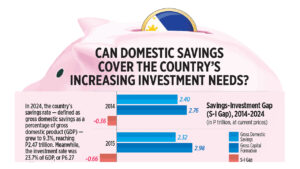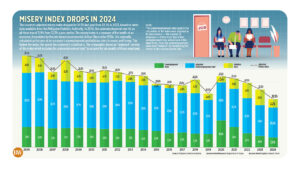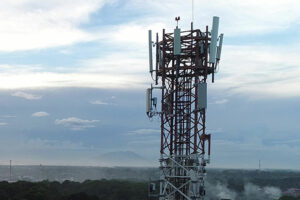Editor's PickInvesting Ideas
Can domestic savings cover the country’s increasing investment needs?

In 2024, the country’s savings rate — defined as gross domestic savings as a percentage of gross domestic product (GDP) — grew to 9.3%, reaching P2.47 trillion. Meanwhile, the investment rate was 23.7% of GDP, or P6.27 trillion, resulting in a P3.8-trillion gap. The savings-investment gap (S-I) gap — the difference between gross domestic savings and gross capital formation — shows a country’s ability to finance its overall investment needs. An S-I deficit occurs when a country’s investment expenditures exceed its savings, forcing borrowing to fund the gap.




